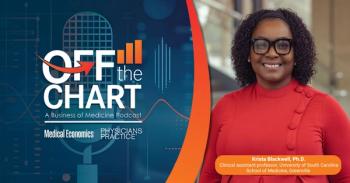
30% of all U.S. medical care could be virtual by 2026
Key Takeaways
- Telehealth could represent up to 30% of U.S. medical appointments, pending regulatory decisions by Congress.
- Mental health telehealth usage remains strong, reflecting patient preference and physician adaptability despite overall declines.
A ScienceSoft report finds technology and demand are in place, but regulatory uncertainty looms.
That trajectory, however, hinges on something far less predictable: Washington.
Though lawmakers extended key
“Key obstacles to telemedicine adoption are related to regulations rather than technological barriers or lack of demand,” Gala Batsishcha, M.D., a health care IT consultant at ScienceSoft, wrote in the February forecast.
Surge in mental health adoption signals staying power
ScienceSoft’s analysis highlights one specialty in particular:
“The resilient utilization in mental health shows that the necessary technology and demand are already in place,” Batsishcha said in the report. “The future of its adoption — whether it continues to increase or returns to pre-pandemic levels, largely depends on government decision-makers.”
Hospitals are ready, patients are willing
By early 2024, nearly 79% of U.S. hospitals had telehealth systems in place, according to
The problem isn’t enthusiasm. It’s policy.
Congress extended many Medicare telehealth flexibilities through September 30, 2025, including expanded access to virtual visits from home and support for a broader range of physicians. But programs like audio-only visit reimbursement, telehealth allowances for high-deductible health plans and cross-state licensing reforms were left out of the extension.
Clinician benefits — and concerns
For physicians, telehealth offers efficiency gains, reduced no-shows and opportunities to offload lower-acuity visits. ScienceSoft notes that virtual care models — like
Even so, not all clinicians are sold.
“It’s important to strike a balance here,” Batsishcha wrote. “For routine follow-ups, medication refills, mental health consultations or minor ailments like colds and flu, virtual visits can be an excellent way to save time and reduce strain on the health care system. However, for more complex or urgent issues … an in-person visit is crucial for an accurate diagnosis and immediate intervention.”
For many, the concern is that critical symptoms could be missed without a physical exam, and the interpersonal trust of the physician-patient relationship could erode if telehealth services become overused or impersonal.
The road ahead
Whether virtual care continues its expansion or hits a wall now depends on what happens in Congress between now and the fall.
Following March’s continuing resolution which kept telehealth options afloat through the end of September, industry leaders, including the
ScienceSoft’s report remains bullish on the potential — predicting 25-30% of all U.S. medical visits could be virtual by the end of 2026 — but that’s only if lawmakers provide long-term certainty.
“The necessary technology and demand are already in place,” Batsishcha wrote. “Key obstacles to telemedicine adoption are related to the regulations rather than technological barriers or lack of demand.”
Newsletter
Stay informed and empowered with Medical Economics enewsletter, delivering expert insights, financial strategies, practice management tips and technology trends — tailored for today’s physicians.
















